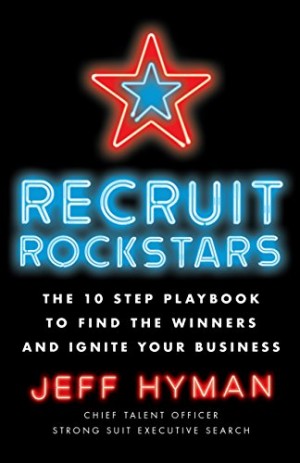When Will Our Hot Job Market Overheat?

The talent shortfall is likely to become far more severe in 2018.
The December 2017 employment report revealed that the unemployment rate had fallen to 4.1 percent, the lowest level in 17 years. Job seekers, rejoice!
For employers, the picture is less rosy. This news means it’s going to become even tougher – and more expensive – to find, hire, and retain the best employees.
While wage growth has lagged during the economic recovery, salaries are beginning to edge up, particularly in the manufacturing sector. Economists predict the unemployment rate could drop into “the low 3 percent range” by the end of 2018, which would mark the lowest level since the 1950s and would undoubtedly stimulate a faster pace of wage growth.
This War for Talent Is About to Get Ugly
The stark reality is that good workers are becoming scarce at all levels of the economy. Employers are aggressively advertising to fill low-paying service and manufacturing jobs. There is a huge demand for highly skilled technical people in both strategic and operational areas. It is getting harder and harder to find top leadership talent who can navigate organizations through today’s complex and fast-changing business environment.
Most employers recognize the issue. Surveys indicate that top executives and business owners are making recruitment a higher priority. The bad news: Most employers still aren’t effectively dealing with the problem.
The stakes are high. Talent has become the No. 1 biggest differentiator between organizations. Companies that attract the most top performers and deploy them effectively will be best positioned to create and execute winning strategies and achieve their goals in the years ahead.
Culture Is King
The world of work has changed. Years ago, if you quizzed people about the No. 1 reason they chose one job over another, the vast majority would say salary, benefits, or long-term opportunity. Today, most people would say company culture, according to a recent study by executive search firm Korn/Ferry.

Sure, TOMS is exceptional in its social mission, but many other companies are starting to see the writing on the wall. These organizations are doing things like providing paid time off for employees to volunteer or donating a percentage of sales to worthy causes.
While companies need to appreciate this phenomenon, creating a culture that attracts rockstar employees is not only about doing good in the world. More importantly, it is about instilling organizational values that resonate with top performers and empowering people to exercise their talents and skills to make a real difference in the organization.
I like to say that a company has a “DNA profile,” which I define as the three or four qualities that define that organization. For example, a book publisher might define itself as innovative, flexible, and detail-obsessed. By instilling these qualities throughout the organization – and hiring to these qualities – the publisher will build a powerful culture that will attract potential employees who value these very same qualities.
Getting culture right is the No. 1 thing organizations can do to attract and retain top employees over the long term. The great thing is, at a certain point, it becomes a virtuous circle. The more rockstars you recruit, the easier it is to recruit additional rockstars.
Expand Your Talent Pool
Creating a great culture is a long-term and never-ending project. In the meantime, there are other things you can do to cast a wider net to find top employees.
Gone are the days of 9-5 schedule in a central office. Technology enables people to work from any location and – if they are working independently – at any time of day. Organizations that can best accommodate the growing number of workers who want more flexible work schedules and better work/life balance will have an advantage in recruiting over employers with limited options.
Finally, employers should think about hiring contingent workers on a project-by-project basis. According to McKinsey & Company, about 162 million people in Europe and the United States, which represents 20-30 percent of the working-age population, are now engaged in some form of independent work. Those numbers are expected to grow substantially in the years ahead.
For employers, contingent workers represent an easy way to quickly scale up projects and to ramp back down when business activity drops. For individuals, contingent work provides greater freedom and flexibility.
While it might be tempting to look at contingent workers solely as a cost-saving measure, I think that is shortsighted. Rather, think of contingent workers as a fluid talent pool you can tap to get top performers on an as-needed basis.
The talent shortage is an ongoing problem that is only going to become more severe in the years ahead. The world of work is changing. Change with it.
Jeff Hyman is best-selling author ofRecruit Rockstars , adjunct professor at Kellogg School of Management, and chief talent scout at Strong Suit Executive Search.

